“I forgot the cucumbers.”Nóz w wodzie [Knife in the Water] (Roman Polanski, 1962)
Apr
23
tomato soup
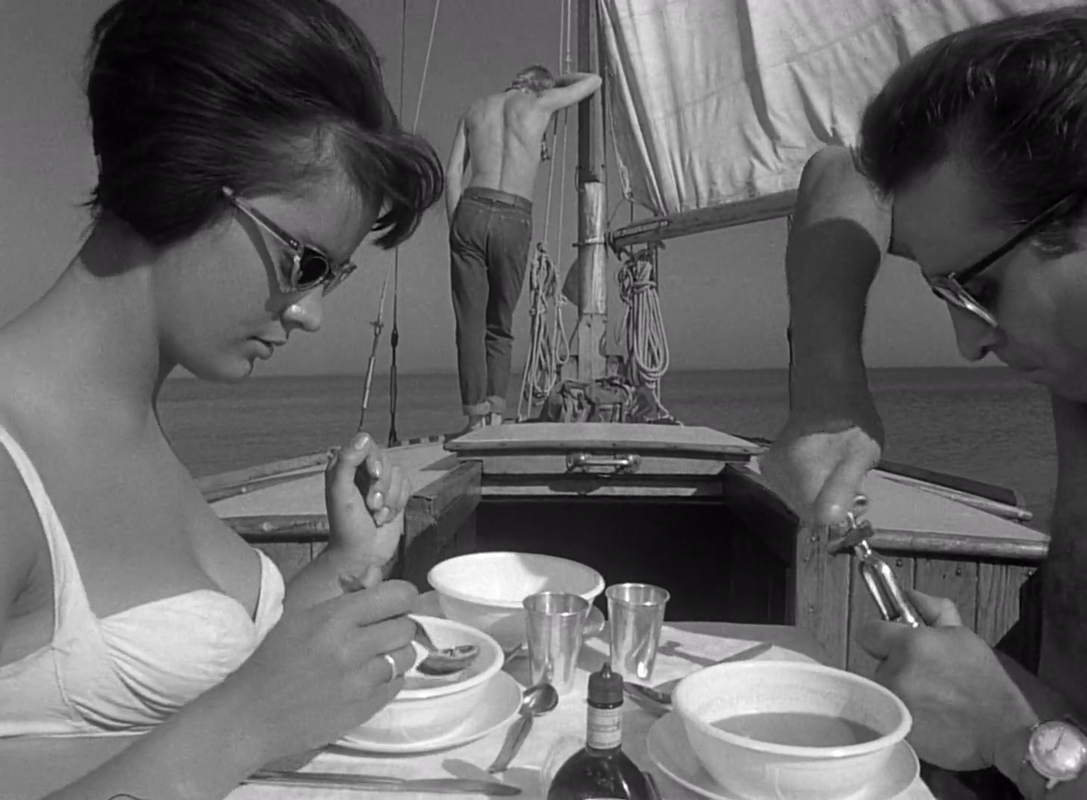
The couple – Jolanta Umecka as Krystyna and Leon Niemczyk as Andrzej – enjoy their little lunch for two of wine and canned soup while the young man (Zygmunt Malanowicz) mopes on the ship's bow. DP: Jerzy Lipman.
– Krystyna
“The madwoman has received your grace.”L'amore (Roberto Rossellini, 1948)
Apr
22
alms

Nannina (Anna Magnani) in “Il miracolo”, ascending a staircase while eating her alms. DP of this segment: Aldo Tonti; DPs “Una voce umana”: Robert Juillard & Otello Martelli.
– Nannina
“I'd hate to take a bite outta you. You're a cookie full of arsenic.”Sweet Smell of Success (Alexander Mackendrick, 1957)
April 20
20
oysters
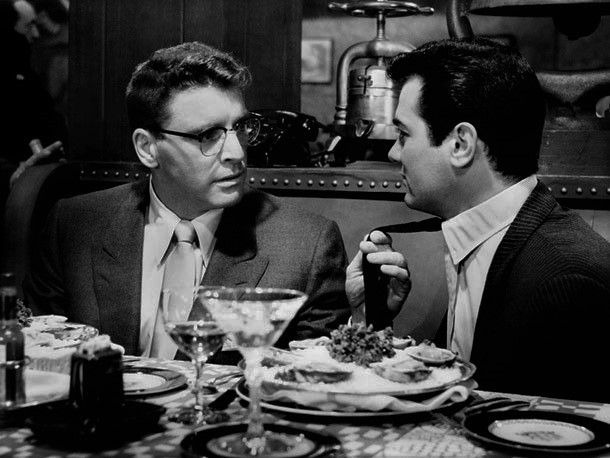
J.J. Hunsecker (Burt Lancaster) pulling Sidney Falco's (Tony Curtis) tie over cocktails and oysters. DP: James Wong Howe.
– J.J. Hunsecker
“There's phrase that… 'A man is made of all men. He is equal to all and all are equal to him'.”Strategia del ragno The Spider's Stratagem] (Bernardo Bertolucci, 1970)
Apr
19
melon
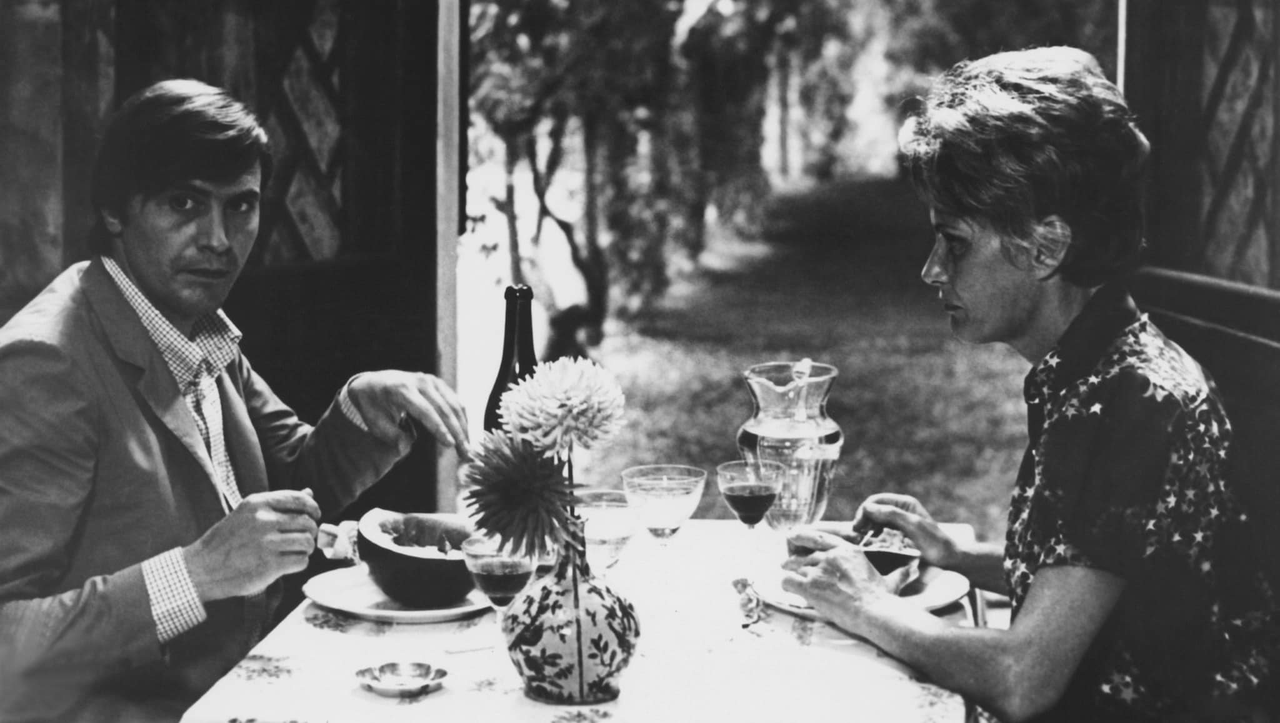
Athos Magnani (Giulio Brogi) and Draifa (Alida Valli) sharing a meal. There's a carafe with water, a small vase with two flowers, wine glasses, and half a melon. Athos looks up, past us, towards something. DPs: Franco Di Giacomo & Vittorio Storaro.
– Athos Magnani
Série noire (Alain Corneau, 1979)
Apr
9
canned pilchards

Franck Poupart (Patrick Dewaere) about to dig into a can of pilchards. A pile of French women's magazine “marie claire” is next to him on an otherwise bare coffee table. DP: Pierre-William Glenn.
Eclipse

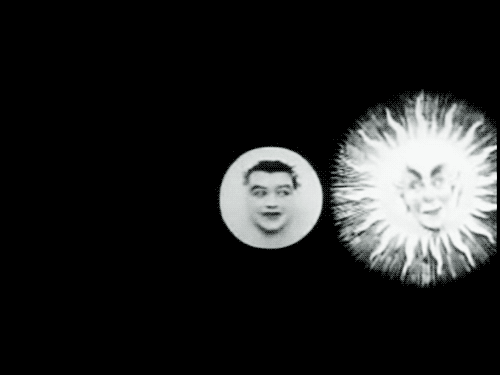



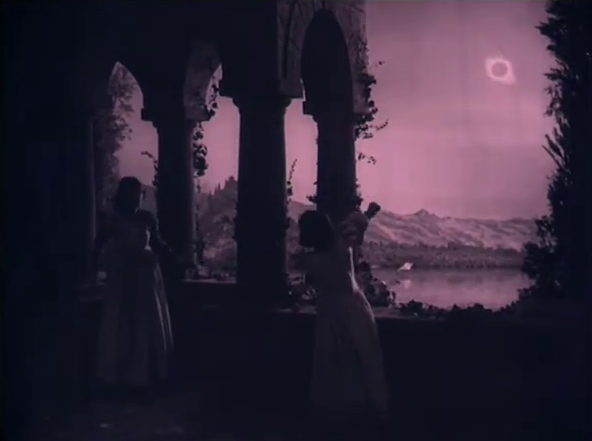
April 8, 2024
“Everything that lives is still. Are the hills going to march off? Will heaven fall upon us? Will the Earth open under us? We don't know. We don't know, for a total eclipse has come upon us.” –Lars Rudolph as János Valuska in “Werckmeister harmóniák”
Slnko v sieti [The Sun in a Net] (Štefan Uher, 1963) L'éclipse du soleil en pleine lune [The Eclipse: The Courtship of the Sun and Moon] (Georges Méliès, 1907) Werckmeister harmóniák [Werckmeister Harmonies] (Béla Tarr, 2000) L’Eclisse (Michelangelo Antonioni, 1962) That Cloud Never Left (Yashaswini Raghunandan, 2019) Wunder der Schöpfung [Our Heavenly Bodies] (Hanns Walter Kornblum, 1920/25)
#Arcs #MariánBielik #JanaBeláková #LarsRudolph #MonicaVitti #AlainDelon #eclipse #todo
Raggare! [Blackjackets] (Olle Hellbom, 1959)
Apr
3

Bibban, a beaming blonde (Christina Schollin) in a petticoat, at a small bar table smoking a cigarette. There's an half-empty glass and a full ashtray next to her. Just offscreen the object of her smile: a smartly dressed man reaching for his glass. DPs: Frank Dalin & Bertil Palmgren.
“Trouble is, she likes everything. She's always happy. She desires nothing, envies no one, is curious about nothing. You can't surprise her. She doesn't notice the humiliations, though they happen to her every day. It all rolls off her back like some waterproof material. Zero ambition. No moral code. Not even a whore's love of money.”Io la conoscevo bene [I Knew Her Well] (Antonio Pietrangeli, 1965)
Apr
2
cocktails
.png)
A lone Roberto (Enrico Maria Salerno) at a lively cocktail party in Rome's hypermodern EUR district. DP: Armando Nannuzzi.
– the writer
“Empires, the past – they're beyond me! Will things change for the better? Will bums like these disappear? And the slums too? Come on. Tell us!”太陽の墓場 [Taiyō no hakaba / Grave of the Sun / The Sun's Burial] (Nagisa Ōshima, 1960)
Mar
31
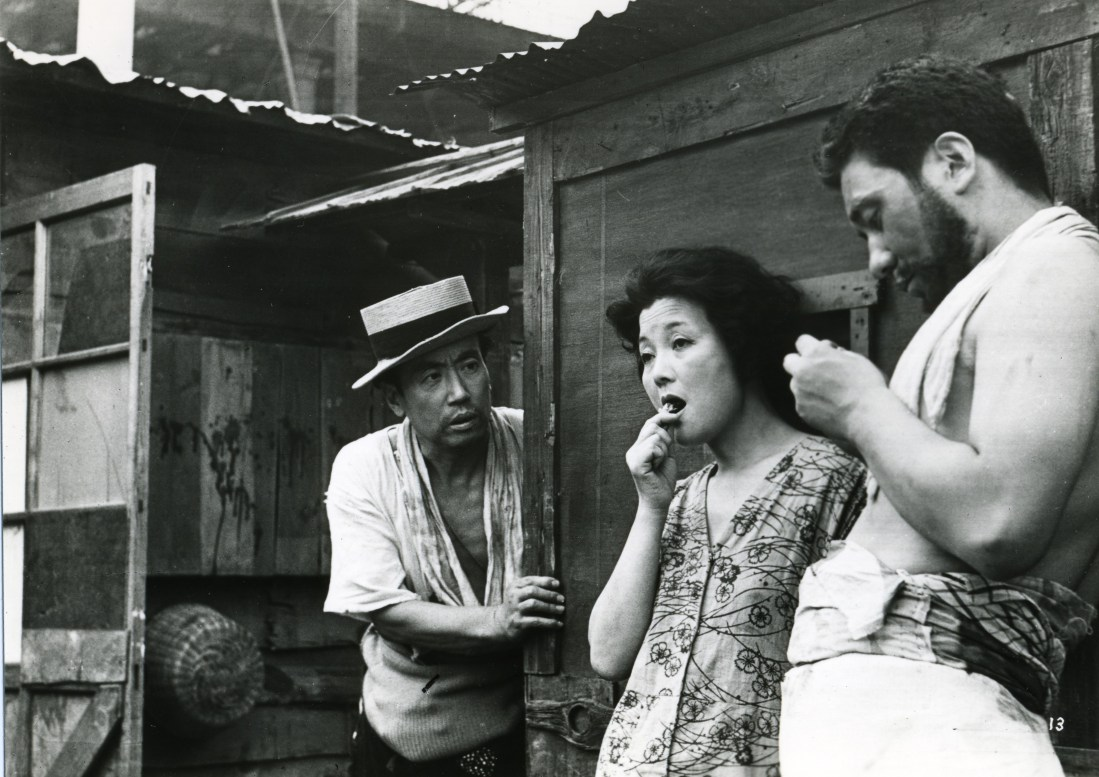
An empty-looking woman eats something while a scrawny man in a pork pie hat and dirty shirt eyes her. Next to the woman a bulking bearded guy, cleaning his nails. DP: Takashi Kawamata.
– Hanako
Salesman (Albert + David Maysles, Charlotte Zwerin, 1969)
Mar
29
breakfast
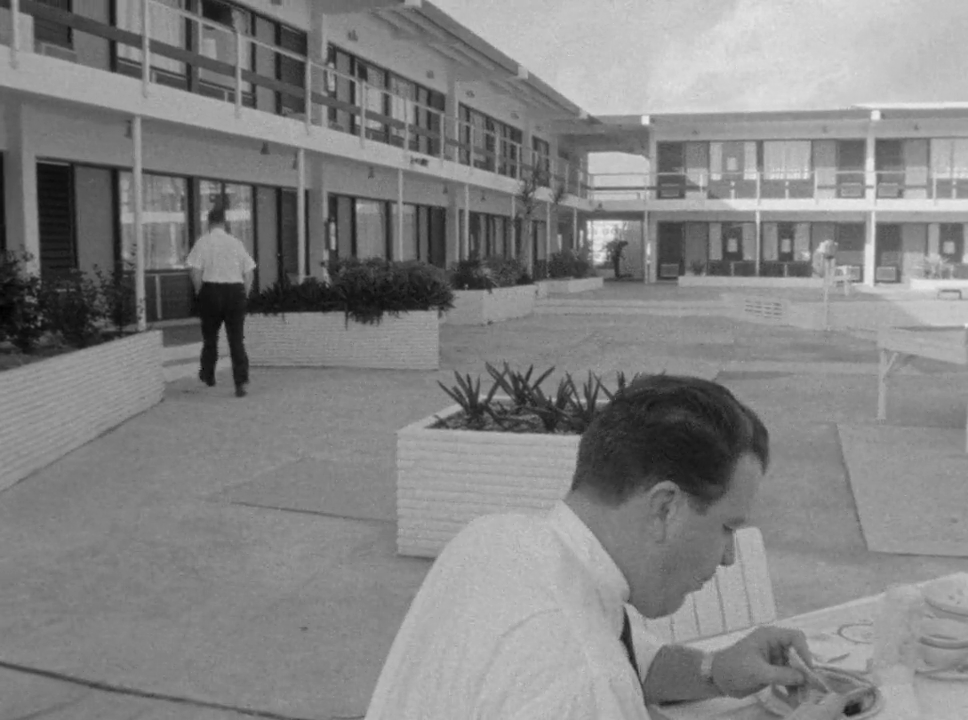
Bible salesmen enjoying breakfast at a soulless motel. DP: Albert Maysles.
Watched on Good Friday.